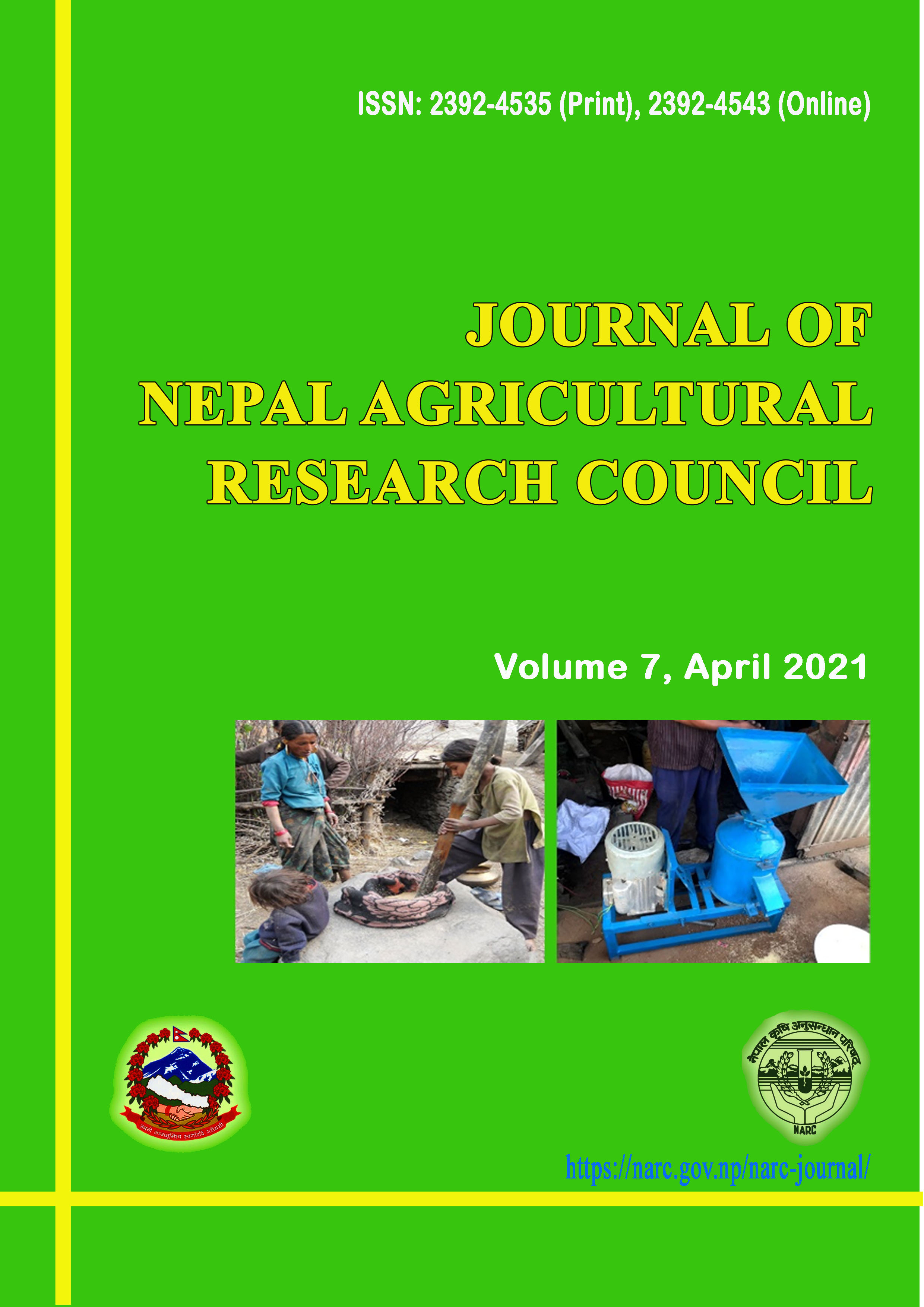Rapeseed Yield in a Maize – Rapeseed Cropping Pattern over a Long-Term Nutrient Management Experiment
DOI:
https://doi.org/10.3126/jnarc.v7i1.36917Keywords:
Integrated plant nutrient management, maize – mustard cropping system, mustard, tori, yield predictionAbstract
A long-term soil fertility experiment in maize (Zea mays) – rapeseed (Brassica campestris var. toria) cropping system was initiated in Nepal Agricultural Research Council (NARC), Directorate of Agricultural Research (DoAR), Lumbini Province, Banke, Khajura (the then Regional Agricultural Research Station) since 1994. The field experiment was designed in the randomized complete block including nutrient as treatment at nine rates (0–0–0 nitrogen – phosphorus – potash (N–P2O5–K2O) kg/ha, 60–0–0 N–P2O5–K2O kg/ha, 60–40–0 N–P2O5–K2O kg/ha, 60–40–20 N–P2O5–K2O kg/ha, 30–20–10 N–P2O5–K2O kg/ha, 30–20–10 N–P2O5–K2O kg/ha + 30 cm stover from previous maize, 60–40–20 N–P2O5–K2O kg/ha + 30 cm stover from previous maize, farmyard manure 10 t/ha and 30–20–10 N–P2O5–K2O kg/ha + farmyard manure 6 t/ha) and was replicated three times. Rapeseed crop yield attributes including days to flowering, plant height, siliqua per plant, 1000 grains weight, seed yield and straw yield and soil fertility parameters including soil pH, soil organic matter content, soil total nitrogen content, soil available phosphorus content and soil available potash content were monitored from 1994 to 2018 growing seasons. There was a significant effect (p < 0.01) of nutrient treatments in the days to flowering, plant height, siliqua per plant, 1000 grains weight, seed yield and straw yield. The highest mean seed yield (445 kg/ha) was obtained from the nutrient application at the rate of 30–20–10 N–P2O5–K2O kg/ha + farmyard manure 6 t/ha during 1994 – 2018. Yield trend analysis revealed nutrient treatment with farmyard manure both FYM 10 t/ha and 30–20–10 N–P2O5–K2O kg/ha + FYM 6 t/ha had significant positive (p < 0.001, R2 > 0.30) trend of rapeseed seed yield with the maximum 1000 kg/ha rapeseed yield in 2018. Soil analysis results after rapeseed harvest in 2018 showed two nutrient treatments including farmyard manure had significant high soil organic matter (SOM > 1%), soil available phosphorus content (P2O5 > 55 kg/ha) and soil available potash content (K2O > 550 kg/ha). In the long-term, integrated nutrient management applying 30–20–10 N–P2O5–K2O kg/ha + FYM 6 t/ha was the optimal nutrient management option for rapeseed production in maize – rapeseed cropping system at Khajura and similar agro-ecological conditions.
Downloads
Downloads
Published
How to Cite
Issue
Section
License
This license enables reusers to distribute, remix, adapt, and build upon the material in any medium or format for noncommercial purposes only, and only so long as attribution is given to the creator.




